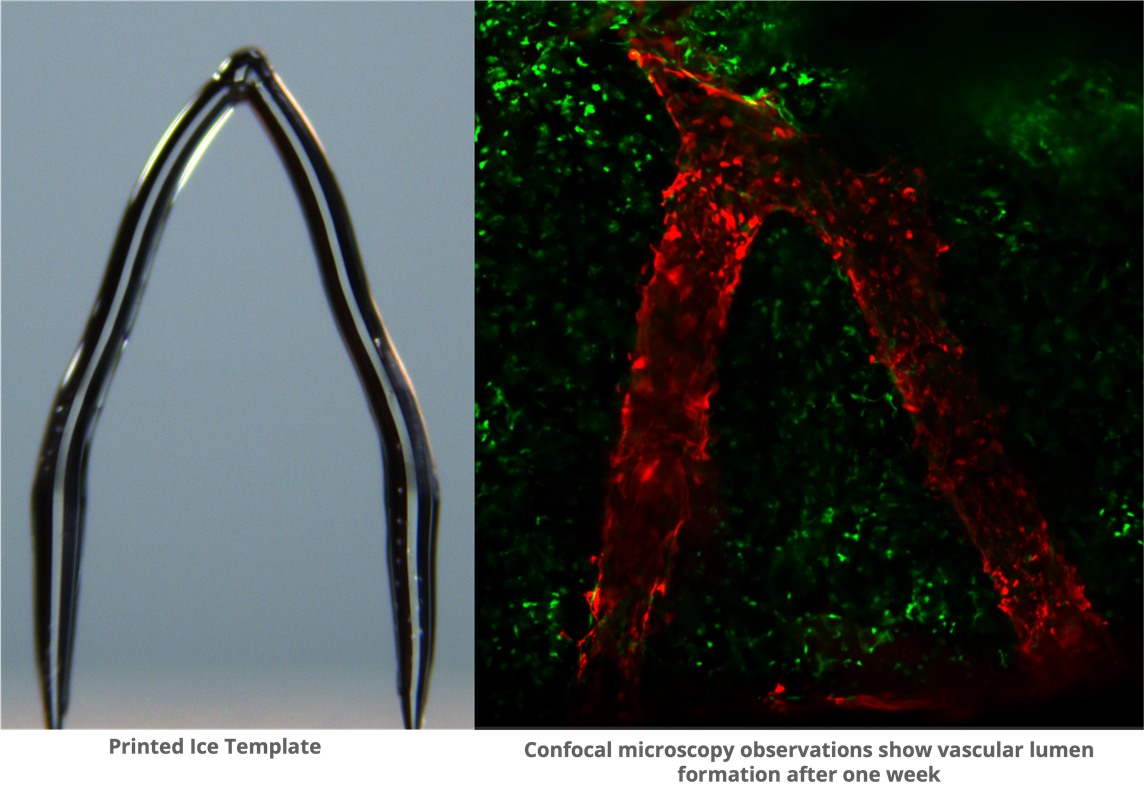In the US alone, there are over 100,000 individuals on waiting lists for organ transplants. If researchers were able to create lab-grown organs and tissues, this would save thousands of people each year and alleviate a major health problem. But growing organs is not that easy.
Part of the challenge is creating the blood vessel networks in artificial organs. From the smallest capilaries to larger arteries, organs have a robust network of blood vessels and recreating it is one of the key challenges.
That’s why researchers are increasingly looking at more innovative techniques — like 3D ice printing.

3D ice printing is a type of 3D printing that uses a stream of water to a very cold surface. The water partially freezes while still maintaining a liquid layer on top. This avoids the layering effect commonly seen in other 3D printing techniques, resulting in smoother, more natural-shaped structures.
Feimo Yang, a graduate student in the labs of Philip LeDuc and Burak Ozdoganlar at Carnegie Mellon University, presented their research at the 68th Biophysical Society Annual Meeting, explaining how it can be used to create better organ blood vessels.
An innovative process
“What makes our method different from other kinds of 3D printing is that instead of letting the water completely freeze while we’re printing, we let it maintain a liquid phase on top. This continuous process, which is what we call freeform, helps us to get a very smooth structure. We don’t have a layering effect typical with many 3D printing,” Yang explained.
The 3D printing approach is used to create the desired network of blood vessels. The researchers also use heavy water, which has a higher freezing point due to the replacement of regular hydrogen atoms with deuterium, an approach that enables the production of intricate designs with enhanced precision.
After creating the desired ice shape, this template is embedded into a supportive material that hardens around the ice. Then the ice melts away, leaving behind the channels that mimic the blood vessels in the body. Although still incipient, this approach could revolutionize tissue engineering, particularly for creating blood vessels within lab-grown organs.
Moreover, the ability to test drug effects on these printed vessels and to personalize treatments by coating them with a patient’s own cells before administration heralds a new era in precision medicine and therapeutic interventions.
Although there’s still a long way to go before the technique can be used in a practical scenario, advancements in tissue engineering, particularly through the innovative use of 3D ice printing technology, offer a glimmer of hope in addressing this crisis. As science fiction as it sounds, the challenge of creating human organs for transplant in a lab may not be all that far away — and with it, an opportunity to save plenty of patients.









